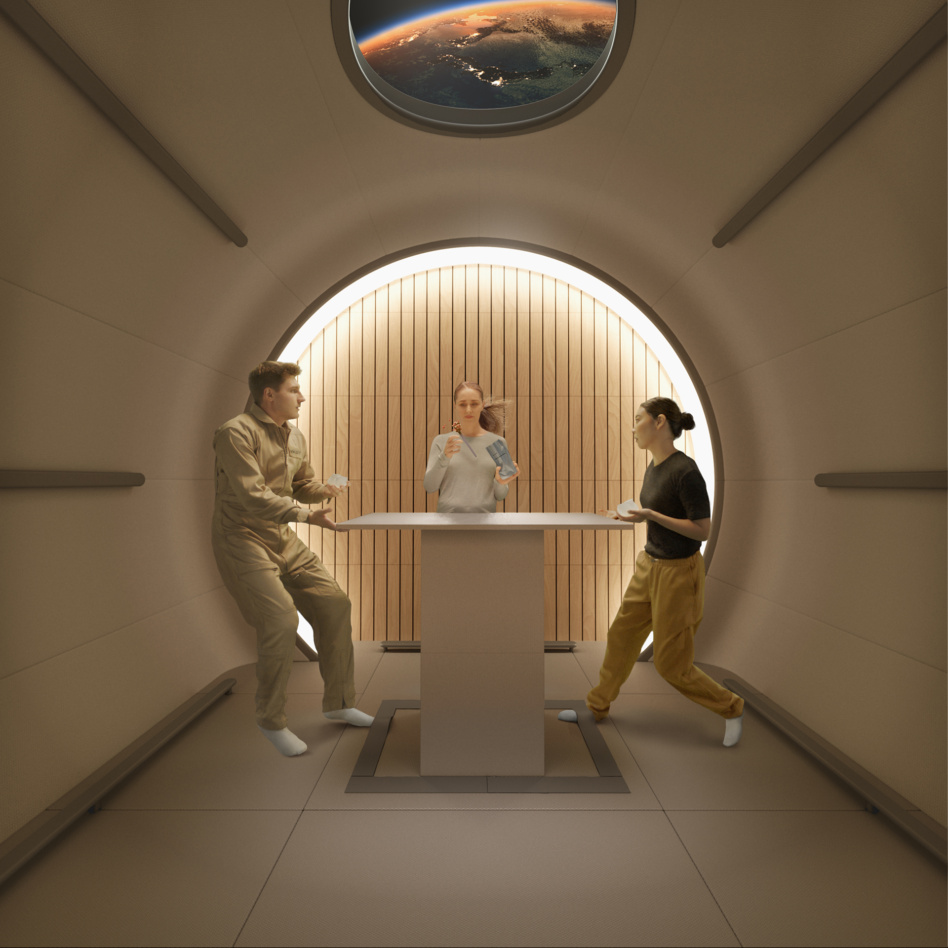Vast, which is attempting to put the world’s first commercial space station in orbit, unveiled the interior design features of its Haven-1 space station yesterday—renderings that look more like a luxury resort than an orbital laboratory.
In an effort to attract commercial customers to visit Haven-1, Vast’s design marks a significant departure from the spartan aesthetic that’s long characterized the ISS.
With maple wood veneer panels, padded walls, and a centralized dome window more than a meter wide, Vast is making it clear that comfort is a top priority.
“The design aesthetic is becoming really important as we try to market these vehicles and offer opportunities for others—aside from career government astronauts—to fly in space,” Vast’s astronaut advisor Drew Feustel told Payload.

Amenities: Haven-1 can host up to four astronauts at a time in accommodations that are slightly larger than those on the ISS. Each room comes with built-in storage, a vanity, and queen-sized bed that’s engineered to reduce sleepless nights.
Under the guidance of astronauts like Feustel, who’s visited the ISS twice and served as its commander in 2018, Vast has developed a patent-pending sleep system, which provides a customized amount of pressure to offer gravity-like comfort.
“Although it’s amazing to be sleeping in a weightless environment, over time it can become difficult because you lose that restful sleep that you’re used to with gravity, allowing your body to actually relax all your muscles,” Feustel said.
At 24 m3, Haven-1’s common area is about a quarter of the size of the ISS’s Destiny module and features a retractable table, a large domed skylight, and a resistance band exercise system. The station also comes equipped with SpaceX Starlink internet access.
Creature comforts aside, Haven-1 is still a floating laboratory. It has 10 Middeck Locker Equivalent payload slots that can support a range of scientific experiments for government and commercial clients.
Reservations: Availability is limited. Haven-1 has an on-orbit life span of three years but can only host a full crew for about 40 days in total, according to Feustel.
As a result, the station will sit empty for the majority of its life, while being operated remotely by Vast’s mission control center in Long Beach, CA.
That’s because Haven-1 lacks a closed loop ecosystem. While the spacecraft provides thermal control and electric power, a SpaceX Dragon is needed to deliver oxygen, offload CO2, and manage humidity while the spacecraft is crewed.
At the end of the day, Haven-1 is only a first iteration, and Vast expects to build larger and more capable space stations in the future, as the company jockeys to take over from the ISS.
What’s next: Vast aims to launch Haven-1 as early as 2025, and the company believes they can meet this ambitious goal through parallel manufacturing and testing tasks.
So far, the company has nearly fully constructed the test structure of the spacecraft, which will soon be sent to NASA’s Plum Brook facility for pressure and components testing. At the same time, they’re actively building up other internal structures, which will house all of the avionics, crew habitability components, and storage areas.
“We’re pretty confident in the timeline that’s been laid out, although it is ambitious,” Feustel said. “The company is growing quite rapidly to be able to accommodate that accelerated manufacturing pace.”
Correction: This story was updated to reflect the correct number of days Haven-1 will be occupied by crew members on orbit.




